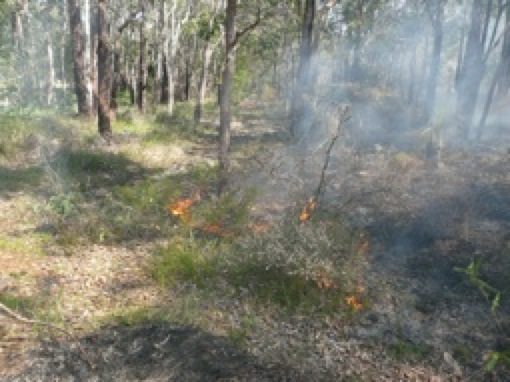How do we fight bushfires?
The vital thing in attacking a bushfire is to get suppression forces onto it quickly. A fire is much easier to suppress when it is smaller than when it has had time to build up momentum and move fast. Therefore detection of a “smoke” at the earliest possible time is critically important. In Western Australia the area with the heavy west fuel loads, the forests and associated ecosystems in the south west, are covered by a detection system that combines some fixed lookout towers and aerial patrols with light aircraft.
There are also some well-known lookouts on tall karri trees in the lower south west. In a very large bushfire, where locating the fire edge is difficult due to smoke, an airborne infra-red sensor may be used to define the fire front.
The fire detection system is linked by radios to field offices where firefighter forces are located.
The techniques used by fire crews varies according to the size and intensity of the fire. A small fire burning at moderate intensity will be fought by raking a bare earth firebreak around it and then using pack sprays to douse any flare-ups or logs burning near the firebreak. The usual approach is to work along the flanks of the fire and “pinch out” the headfire.
If the fire intensity is too great to allow attack by ground crews, similar to that shown above, a bulldozer or a wheeled loader will be used to construct a firebreak, working along the flanks in the same way, and pinching out the headfire.
A bulldozer with a “pusher bar” for toppling small trees.
In a forest situation, trying to subdue the flames by water is generally a waste of time, as the amount of water required is too great.
It is important to understand that when an area has had its understorey fuel reduced by a low intensity burn, it does not become a firebreak, in the sense that it will stop a running fire, unless the burn has been moderately intense, as is often the case with an autumn season burn or has taken place only a few months previously.
The crucial change, with respect to fire management, is that when the fuel is so reduced, fire behaviour is less intense and it is possible to attack a fire front under even quite severe weather conditions. For example, in jarrah forest fuels, once the litter has accumulated beyond about five years, frontal attack will fail under severe weather conditions, but can succeed when the litter is less than five years old.

This is a fire in light fuel that would be easily (and safely) controlled by a crew using hand tools.
Except for a special type of burn, one required to be intense to create ashbeds for karri regeneration, prescribed burns are not intended to remove all litter and understorey vegetation. The usual objective, in a burn intended to reduce forest fuel, is to have the burn extend over only about 70% of the land area.
After a bushfire has been controlled, the next crucial step is mopping up around the fire edge. Mopping up means checking that there are no logs or small unburnt areas near the edge that could later initiate a flare up and a breakaway fire. Another thing mop up crews look for is any trees still alight aloft, that could easily shed burning embers outside the fire edge and start a “hopover”.
Mopping up a fire edge
In media reports of a bushfire we often hear the expression “backburning” used by reporters. Sometimes the use it to describe a prescribed burn, which is quite a different thing. Backburning is a technique used, usually in desperation, to stop a running bushfire by lighting up a strip of bush along a road in advance of the headfire, aiming to halt the fire by having it run into freshly created bare ground. This is an extremely risky thing to do, as it means attempting to carry out a prescribed burn under weather conditions that would never normally be used. Very often, a backburn will be impossible to control and will escape and greatly increase the area of the original bushfire. It may also increase the risks to the firefighters.




